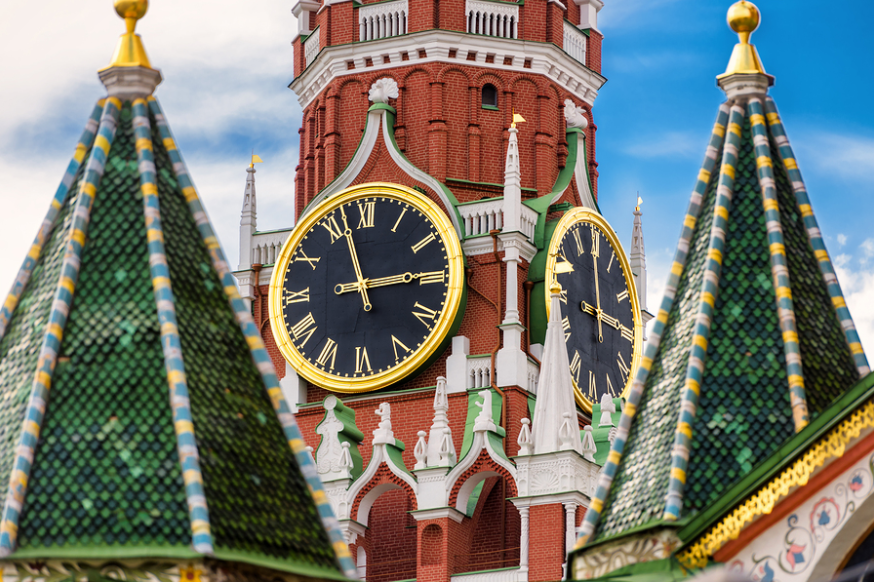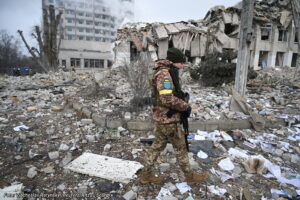ING forsøger at lave en analyse af virkningen af sanktionerne mod Rusland, men banken gør opmærksom på, at det er næsten umuligt at komme med bud på konsekvenserne. Sanktionerne har øjeblikkeligt ramt russerne hårdt, f.eks. med et fald i rublens værdi på 20 pct., og Ruslands centralbank forsøger at fastfryse udenlandske investeringer og aktiekøb i Rusland. Men fortsætter krigen i længere tid, bliver brændsels- og brændstofpriserne presset godt i vejret, især i Europa, og det kan ikke udelukkes, at Rusland vil skære ned på forsyningerne. Desuden kan det blive dyrt og besværligt for virksomhederne i Vesten at få vitale metaller til produktionen. Alt i alt kan krigen og sanktionerne gøre det svært at gennemføre den grønne omstilling så hurtigt, som Europa og USA for kort tid siden vedtog.
War in Ukraine – an economic update
The war in Ukraine has led to unprecedented sanctions on Russia. We don’t want to speculate about next steps in the war but we take a first look at the sanctions and broader possible economic implications from the sanctions and the war
The war in Ukraine is a tragedy. Over the weekend, events accelerated with many Western governments announcing additional sanctions and military support for Ukraine. Russian President Vladimir Putin announced the activation of Russia’s nuclear defence systems. It is not our job to present military scenarios on how the situation will evolve but it is our job to provide more insights into what is going on in the economy. With the current uncertainty and the fast-moving situation, developing sophisticated scenario analysis does not make sense. Instead, we have looked at the announced sanctions so far and offer a very preliminary assessment of the potential economic impact of the war.
A closer look at the sanctions
The sanction response to the military escalation so far has been aggressive and generally coordinated, but careful not to disrupt Russia’s key commodity exports to the main partners. That is probably explained by Russia’s importance to the commodity and financial markets, and also by the necessity to leave room for additional pressure in case of further military escalation.
The measures announced in the headlines are bold, including full blocking sanctions against banks, a cut-off from the SWIFT messaging system which allows financial institutions to authorise payments, and sanctions on the Central Bank of Russia – all elements from the most severe Iranian playbook. However, the approach in each is more nuanced.
- Full blocking financial sanctions against VTB, Russia’s second-largest bank (с. $250bn in assets including $46bn in FX, foreign assets – unclear). Inclusion in the US’s Specially Designated Nationals list (with a 30-day delay) means the freezing of assets in the US and a global ban on transactions (except for energy etc.) with the entity and its subsidiaries. Other additions to the SDN list include Otkritie, Sovkombank ($7bn FX assets each), and Novikombank. Small banks.
- SBER, the largest bank (c. $450bn in assets, including $94bn in FX) will also be cut off from USD transactions in 30 days (except energy, etc.), but there is no freeze on foreign assets (the Correspondent Account or Payable-Through Account sanctions list (CAPTA) is less toxic than SDN).
- Coordinated sectoral sanctions (companies on the Sectoral Sanctions Identifications (SSI) list are banned from new equity and foreign debt with terms over 14 days, but there is no restriction on doing business/transactions) have been widened to include Gazprom, Russian Railways, Alfa-Bank, ALROSA, and Credit Bank of Moscow.
- The cut off from SWIFT has been preliminarily approved, but apparently, this will be decided for banks on an individual basis and not all names will be accompanied by full blocking sanctions (it will be possible to make payments via other channels. It also looks as if transactions for oil and gas payments are excluded. Apparently, credit card payments have already started to bounce in Russia over the weekend.
- Sanctions against the Central Bank of Russia are not entirely clear, yet. It looks as if all FX reserves are blocked. Apparently, the Bundesbank holds a decent percentage of the reserves, but Special Drawing Rights and gold still seem to be available. The key point is CNY/RMB, as the reserve breakdown is released with a lag, and the reserves could have been ‘yuanised’ since mid-2021.
- Of course, the door will be open to a full Iranian scenario in the event of a further escalation. So far, the sanction waves are coming once every two to three days.
On the Russian side, there could be several ways to counter or offset the current sanctions. Today, the Central Bank of Russia hiked policy interest rates to 20% and introduced capital controls. Other options could include (not necessarily in this order) the freezing of inward foreign direct investment in response to EU/US sanctions against non-financials and the suspension of business activity.
- A moratorium on banks’ foreign liability repayments to the US and EU, in response to the freezing of bank assets.
- A complete moratorium on corporate debt repayments in response to the freezing of CBR assets.
- A ban on imports from the EU in response to technology sanctions. Russian imports from the EU, UK, Switzerland and Norway amounted to $120bn in 2021, or 41% of Russia’s imports of goods.
- Other measures might include a ban on air transit over Russia (Siberian channel), making trans-Eurasia flights more expensive, an embargo on exports of titanium and other rare metals (redirection to the East), cutting off gas to the EU (Russia’s total gas exports account for 7-10% of Russia’s total exports, gas production and exports accounts for only 5% of Russia’s federal revenues. New gas contracts to China were announced during the Olympics).
- Oil is more important. It is unlikely that Russia will cut this off itself but it may gradually redirect flows. Overall, the oil and gas sector accounts for half of Russia’s exports of goods, but only 15-20% of GDP, and up to 5% of employment.
More general assessment of economic implications
It is impossible to speculate about the outcome of the war and it doesn’t make sense to come up with specific economic impact scenarios. Instead, it makes more sense to paint a general picture, sketching the possible ranges of economic implications for Western countries, as the sanctions will remain in place in any event and a further escalation of sanctions is still possible.
By now, we all know that Europe gets nearly 40% of its natural gas and 25% of its oil from Russia (this differs across countries), and is likely to be walloped with spikes in heating and gas bills, which are already soaring. Given that Ukraine and Russia have also been labelled as the global breadbasket, food prices are also likely to surge further. Both countries account for roughly a quarter of total global exports.
For energy and food, surges are one thing, supply disruption is another. The world, and particularly Europe, could be facing severe supply disruptions, undermining the industrial rebound and also the private consumption rebound expected with the end of the Omicron restrictions. Globally, a surge in commodity prices will aggravate already existing inflationary pressures, think of Turkey.
Also fuelling inflation fears are possible shortages of essential metals like palladium, aluminium and nickel, creating further disruption to global supply chains already suffering from the pandemic and shortages of semiconductors. Palladium, for example, is used in automotive production, mobile phones and even dental fillings. Nickel is used to make steel and electric car batteries.
There are several economic implications, both shorter- and longer-term, as well as implications for energy/commodities and of course, fiscal policy.
In the shorter run, disruptions to the energy and commodity supply will weigh on growth and push up inflation for longer. Particularly in Europe, the risks of stagflation have increased. For the European Central Bank, but also for other central banks, this new situation is likely to slow down or delay policy normalisation. At the ECB’s meeting next week, any hints of rate hikes are out of the question. We expect the ECB to avoid tying its hands in any direction; still announcing a taper, while not ruling out new easing of monetary policy if needed.
At the same time, the German government’s announcement to increase defence spending by €100bn this year and annual defence spending to 2% of GDP indicates that more fiscal stimulus is in the offing.
The government’s plan to build two LNG terminals as soon as possible goes in the same direction. These examples illustrate that the Ukraine war and its economic implications will put more pressure on the green transition and efforts to speed it up.










